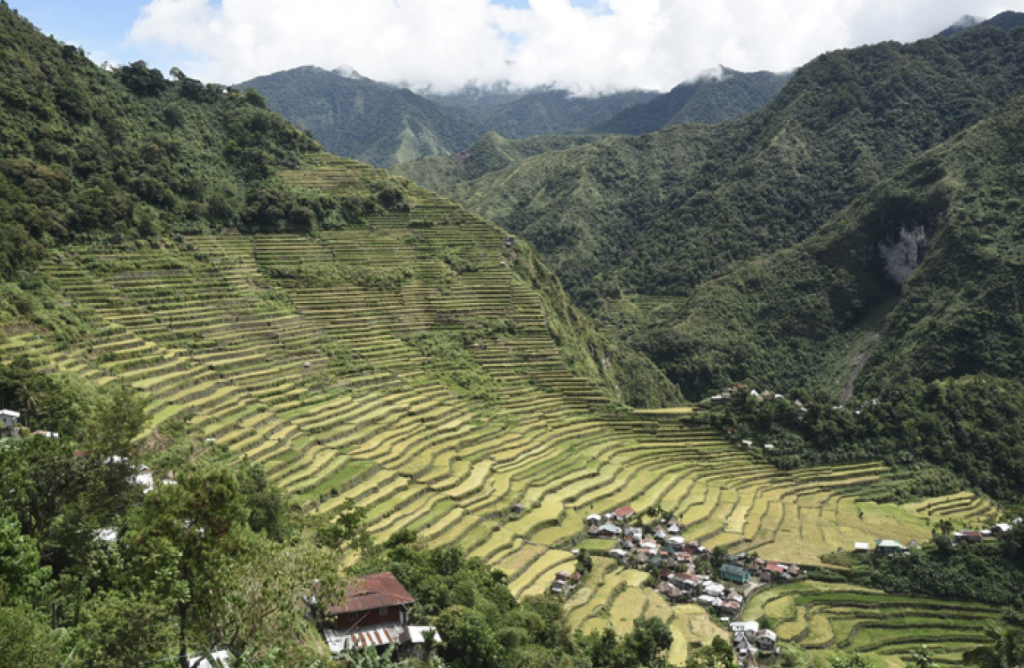How can trails be used to make sense of heritage—tangible and intangible—for the attainment of sustainable development goals (SDGs)?
This was what Dr. Joane Serrano, Professor and Dean of the Faculty of Management and Development Studies (FMDS), University of the Philippines Open University (UPOU), and Dr. John Martin, UPOU Visiting Professor from the University of Plymouth, United Kingdom aimed to illustrate in the book chapter titled, “Heritage Trails: Pathways to Sustainable Development Goals.”
The chapter was co-authored by Jacqueline Nowakowski, a professional freelance archaeologist and educator, and by Dominica Williamson, an interdisciplinary artist called Ecogeographer in sustainable design. It was part of the book titled, “Pathways: Exploring the Routes of a Movement Heritage,”published by White Horse Press and can be accessed in JSTOR, an archival database of scholarly journal articles, books, images, and primary sources in 75 disciplines.
“Heritage, tangible and intangible, is increasingly being identified as a unique asset that can support the sustainable regeneration of rural areas across the world. Trails are often at the heart of the areas being investigated or developed,” stated by the authors in highlighting the value of cultural and natural heritage to humanity.

Muyung (community forest), payoh (rice terraces), and boble (village) in Batad, Ifugao. Source: Y4RIT project
To explore the use of trails in understanding heritage sites as they relate to the SDGs, the authors analyzed case studies of two heritage areas—the Ifugao Rice Terraces in the Philippines and the Carwynnen Quoit, Cornwall, UK. The Ifugao Rice Terraces has been designated as a World Heritage Site (WHS) by UNESCO, while Carwynnen Quoit lies adjacent to a WHS.
For the first case study, an educational narrative approach of “storying the research process” was used. A single walker or researcher narrated the movement along the physical trails or dalan of the Ifugao Rice Terraces, and connected the SDGs to the landscape. Meanwhile, the second case study used movement heritage, where a group of co-walkers matched the trails of Carwynnen Quoit to the SDGs through participatory mapmaking. This facilitated exchange of memories and knowledge of the trails among the researchers while navigating the trails together.

Participatory mapmaking by Fenton-Ia surrounding the area of Quoit. Source: Andy Hughes
Results of the case studies show that trails are more than just infrastructures for mobility, but are also links to sensory experiences, memories, and other associations—evoking one’s sense of place. They also indicate that an understanding of trails influences one’s grasp of the cultural and natural value of heritage sites, which strengthens support for sustainability, management and preservation.
For instance, the trails along the muyung (community forest), payoh (rice terraces), and boble (village) in the Ifugao Rice Terraces draw attention to the unique irrigation system that has been passed on across generations and has led to sustainable practices of the community (SDG 11). Similarly, the four walking trails to Quoit have enabled public access and have created a green space for community gatherings and events (SDG 11).
The case studies particularly highlight the role of heritage trails towards SDG 2, zero hunger; SDG 3, good health and well-being; SDG 4, quality education; SDG 11, sustainable cities and communities; SDG 13, climate action; and SDG 15, life on land.
The book is licensed under Creative Commons, and the chapter can be accessed and downloaded for free through this link.
Written by Written by: Rhea Ariele Pascua • Edited by: Dr. Joane V. Serrano

















FMDS Socials